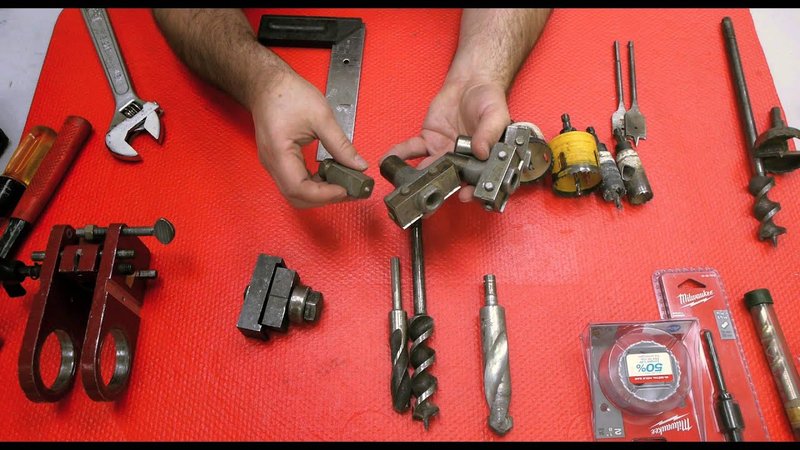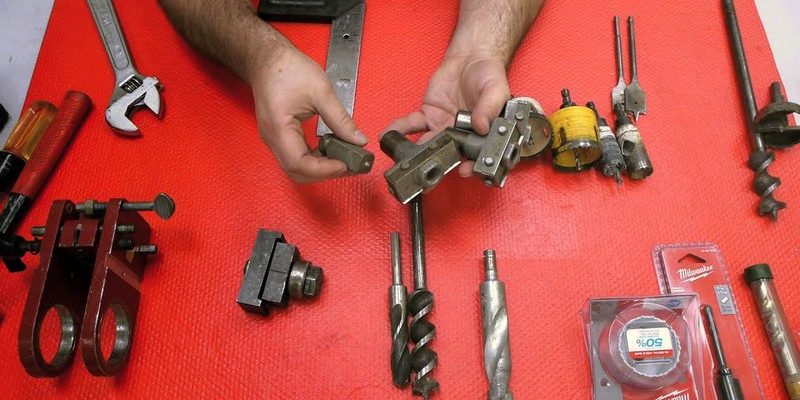
Let’s use the LAB Pro Lock Pick Set as our tool of choice since it’s a mainstay for pros and surprisingly beginner-friendly. If you imagine the inside of a lock as a miniature maze, a good locksmith tool is like a master key—designed to glide through that maze without breaking a sweat. You don’t need years of experience or a mountain of gear; just the right tool, a patient hand, and a clear step-by-step approach.
Why You Might Need to Disassemble a Deadbolt
Most folks don’t think about their deadbolt until it’s giving them trouble. Maybe your key is sticking, or maybe you’ve got a new smart lock remote you want to pair and need to swap out the old hardware. Whatever the reason, deadbolt disassembly is a skill worth learning. It’s about more than just taking things apart: it’s about understanding how your lock works, troubleshooting issues, and making sure your home stays secure.
Picture this: you come home and your deadbolt jams halfway. Annoying, right? Sometimes, a quick reset isn’t enough. You need to open up the lock, check the code on the internal pins, or maybe just swap the battery if it’s an electronic model. And while it’s tempting to call a locksmith every time, with the right tool, you can handle most issues yourself.
If you’re worried about making things worse, don’t stress. Modern deadbolts, from brands like Schlage or Kwikset, are built to be serviceable. Plus, there’s often more risk in ignoring a sticky lock than in learning how it comes apart. Taking control gives you more options—whether that’s pairing a new remote, upgrading security, or simply keeping things running smoothly.
Meet the LAB Pro Lock Pick Set: Your Locksmith Sidekick
Let me explain why the LAB Pro Lock Pick Set is such a favorite. It isn’t just for pros—lots of hobbyists and handy homeowners use it, too. The set gives you a variety of picks, tension wrenches, and specialized tools designed for deadbolt disassembly. Think of it as a Swiss Army knife for locks: small but ridiculously versatile.
With a set like this, you can tackle almost any deadbolt, whether you’re dealing with a high-security model or something simpler. Many deadbolts are engineered to come apart in predictable ways, but screws and plates are often hidden behind faceplates or decorative covers. The LAB Pro set includes slim picks and turning tools that slip past these obstacles with ease.
Why does this matter? Because using the wrong screwdriver or forcing things can damage your lock or even void warranties. The right tool lets you work smarter, not harder. Plus, the kit’s ergonomic design means you can spend time learning the process without getting frustrated or tired.
Sometimes, the difference between a smooth disassembly and a disaster is just having a tool that fits the job. Trust me: nothing crushes your confidence faster than stripping a tiny screw.
Getting Ready: Safety and Prep Before You Start
Before you go poking around inside your lock, let’s get a few basics out of the way. First, grab your LAB Pro Lock Pick Set and lay out the parts so you’re not fumbling mid-job. You’ll want:
- A screwdriver (usually Phillips or flat-head, depending on the deadbolt brand)
- A small parts dish or tray—deadbolt screws love to roll away when you’re not looking
- Your lock pick set, ready and organized
- A flashlight or headlamp (locks have sneaky shadows!)
- Pen and paper if you want to sketch the inside for replacement or reset later
Always start by making sure the door is open and unlocked. Closing it and starting work is a classic rookie mistake—you don’t want to lock yourself out mid-disassembly. If you’re working on a smart lock with a code or battery, make sure you know any pairing or sync instructions you might need for reassembly.
Next, take a picture of the lock before diving in. It sounds silly, but it’s easier to retrace your steps with a photo. Finally, check the manufacturer’s paperwork (if you still have it). Sometimes, there are hidden screws or a code tucked behind the faceplate that you’ll need during troubleshooting.
Step-By-Step: How To Use the LAB Pro Lock Pick Set for Deadbolt Disassembly
Here’s where things get hands-on. The process is simple if you go slow and pay attention. Let’s break it down:
- Remove the deadbolt faceplate. Use a thin flat-head screwdriver to gently pry off the plate—most snap off with a little pressure. Behind it, you’ll spot two screws holding the lock together.
- Unscrew the mounting screws. With your screwdriver, back out both screws. Keep them safe—they’re small and easy to lose.
- Separate the interior and exterior assemblies. With the screws out, the lock usually splits in half. If it feels stuck, don’t force it—slide a thin tension tool from your LAB Pro set between the pieces to pop them apart.
- Locate and remove the lock cylinder. The cylinder is where the magic happens—this houses the key pins and is the core of most troubleshooting. Use a pick from your set to gently ease the cylinder out, wiggling just enough to release it without pulling any wires (if it’s electronic).
- Inspect, reset, or repair as needed. With the cylinder free, you can reset the code pins, check for stuck parts, or just swap your battery if it’s a smart lock. The LAB Pro’s slim picks are perfect for nudging springs and tiny parts without scratching.
- Reverse the process to reassemble. Line up the cylinder, snap the assemblies together, and drive in the screws. Make sure everything spins freely before locking up.
Don’t rush. It’s easy to drop springs or tiny bits, especially if you get distracted. If something sticks or doesn’t budge, double-check that you’ve gotten all hidden screws—sometimes there’s one at the tail end or under a sticker.
Troubleshooting Common Deadbolt Disassembly Problems
You might be wondering, “What if it doesn’t come apart, or I can’t get the cylinder out?” Here’s where troubleshooting comes in handy. Honestly, most deadbolt issues come down to patience and the right technique.
- Can’t remove the faceplate? Some models hide a tiny notch for prying—look for it near the bottom. If it’s painted over or stuck, use the thinnest LAB Pro pick to carefully slide underneath.
- Stuck mounting screws? Apply gentle torque with a tension tool as you unscrew. If stripped, try a slightly larger screwdriver or a bit of WD-40 before forcing anything.
- Cylinder not budging? If it’s held in by a set screw, look for it on the interior side and loosen first. On smart locks, check for hidden wires or extra clips before pulling.
- Lost your place? This is where your pre-disassembly photo helps. If stuck, put things back together in reverse and start again, step by step.
Some deadbolts, especially newer electronic models, need careful handling when you reset or pair the internal code. Always be gentle and consult the instructions if you’re unsure—it’s better to pause than to force something and break expensive parts.
When to Call a Locksmith vs. DIY
Let’s be real: not every deadbolt is DIY-friendly. Brands like Schlage and Kwikset purposely design their locks for basic servicing, but super high-security models might throw in tricky security pins or extra code plates. If you hit a wall—maybe a spring shoots across the room or a part won’t budge—it’s not a failure to call in a pro.
Here’s my rule of thumb: if you’ve tried twice with a careful hand and the right tool, but something doesn’t feel right, pause. Forcing things can leave you with a broken lock and a bigger bill. Professionals have advanced tools, like the LAB Pro’s heavy-duty cousins, and years of troubleshooting experience.
That said, most residential deadbolts can be taken apart and fixed with patience and the right pick set. DIY isn’t about bravado—it’s about knowing your limits and keeping your stuff safe.
Comparing Locksmith Tools for Deadbolt Disassembly
You might be curious how the LAB Pro stack ups against other common locksmith tools. There are universal kits, specialty cylinder pullers, and even 3D-printed tools these days. What makes the LAB Pro stand out is its blend of reliability, comfort, and versatility.
- Universal lock pick sets: Handy for basic locks, but often too bulky or generic for modern deadbolts. They sometimes lack the slim picks or turning tools needed for tight spaces.
- Brand-specific tools: Schlage, Kwikset, and Yale all make branded kits that fit their own locks exactly. Great if you only ever work with one brand, but less useful if you’re troubleshooting different models.
- LAB Pro Lock Pick Set: Designed for both hobbyists and professionals, with a balance of specialized tips and durable wrenches. Easier to use and easier to learn on.
The best tool is often the one you’re most comfortable with. If you’re just getting started, LAB Pro’s forgiving and ergonomic design makes all the difference.
After Disassembly: Resetting, Pairing, and Reassembly Tips
Taking your deadbolt apart is only half the job—you’ll need to put everything back together and, if needed, reset or pair it if you have a smart lock. Lost your code? Time to sync up.
Here’s how to wrap things up neatly:
- Line up all parts before you start reassembly. Don’t force screws—if something doesn’t fit, double-check orientation. Deadbolts often have a “top” mark on the cylinder.
- If electronic, insert a fresh battery before snapping the case shut. Test the lock function before fully tightening screws to avoid surprises.
- For smart locks, follow the pairing instructions. Most have a reset button or code sequence—hold it for a few seconds, then sync with your app or remote. If the lock buzzes or flashes, you’re golden.
- Test everything before closing the door. Run through a couple of lock and unlock cycles. If you hear grinding or if the key doesn’t turn smoothly, take it back apart and check for misaligned pins or springs.
If in doubt, the manufacturer’s website often has diagrams or troubleshooting steps. There’s no shame in double-checking, especially if it’s your first go.
Final Thoughts on Using Locksmith Tools for Deadbolt Disassembly
Getting comfortable with deadbolt disassembly opens up a world of small fixes, security upgrades, and money saved on service calls. The LAB Pro Lock Pick Set isn’t magic, but it’s close—it helps you tackle the job safely and confidently, even if you’re still learning the ropes.
Take your time, keep track of every part, and don’t be afraid to stop and troubleshoot. Honestly, once you’ve done it once, you’ll see that it’s less about being an expert and more about understanding how things fit together.
Locksmith work is a bit like solving a gentle puzzle: every tool has its purpose, every piece its place. With a little patience, the right pick set, and a willingness to learn, you’ll keep your locks—and your nerves—in good shape.
